Building a new home, cabin or room addition? You need to know the types of exterior building materials available and the pros and cons of each.
Exterior Home Building Materials: What To Know
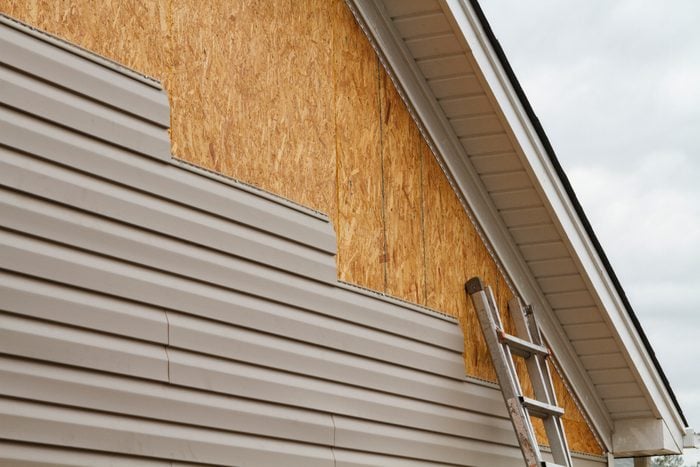
Choosing Your Home’s Exterior Materials
The siding you choose for your home has to look good — that’s a given. But it also has to protect it from the elements, and those vary with climate zone.
Most siding materials can be adapted to work in different climates. But some provide better insulation value and moisture protection than others. Some are easier to clean and resist mold growth better than others. And lastly, some are more expensive than others.
Besides appearance, the main factors to consider when choosing exterior siding include:
- Your climate zone;
- Purchase and installation costs;
- Maintenance;
- The sustainability (eco-friendliness) of the material.
If an exterior siding material is a good value, it’s going to be more popular. According to an October 2021 report by the National Association of Home Builders, the most common exterior wall materials in new U.S. homes are:
- Stucco: 27 percent;
- Vinyl siding: 25 percent;
- Fiber cement siding: 21 percent;
- Brick or brick veneer: 20 percent;
- Wood or wood products: Five percent;
- Stone or rock: One percent.
Just because an exterior siding product is popular doesn’t mean it will work for you. If you’re researching exterior home materials, consider these options:
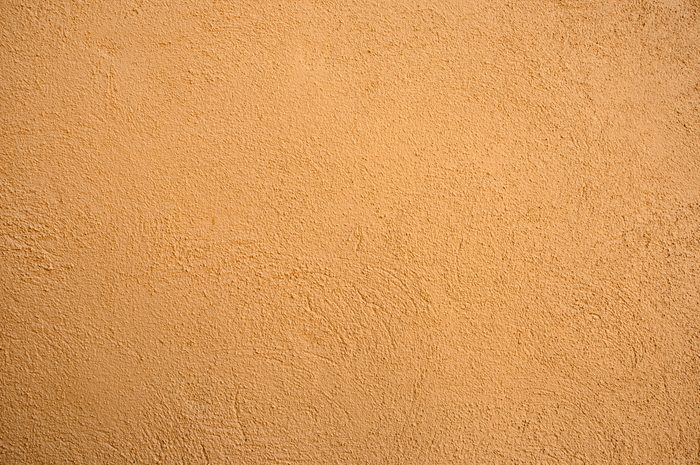
Traditional Stucco
Traditional stucco is a mixture of Portland cement and sand, typically applied in three coats to a lath substrate. The final coat, known as the color coat, can be tinted a variety of earth-tones. That makes stucco a good option for various urban and rural settings.
Stucco is most prevalent in the Western and Southwestern states where Spanish and Mexican architecture has strong influence. But it’s also popular in cold or humid climates.
Pros
- Pest resistant: Stucco forms a solid barrier, impenetrable to rodents and insects.
- Energy efficient: Stucco has more insulation value than many other types of siding.
- Fire-resistant: Cement doesn’t burn, and neither does stucco.
Cons
- Requires maintenance: Stucco accumulates dirt and mold and will look dingy without regular cleaning.
- Expensive to install: Slapping on the stucco is easy, but constructing the lath substrate requires skill and experience.
- Can crack: Cracks develop when the foundation settles or an earthquake occurs.
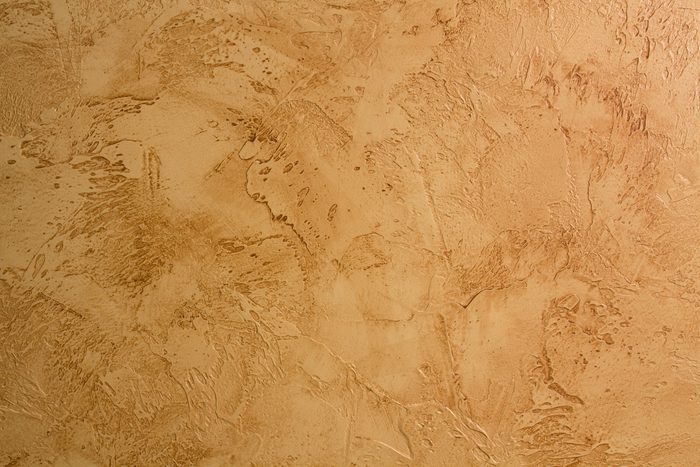
Synthetic Stucco
Unlike traditional stucco, synthetic stucco is acrylic, applied as part of an Exterior Insulation Finishing System (EIFS). That consists of a layer of insulation board and a wire mesh grid to hold a base coat and finish coat of stucco, which is typically applied by hand or by spraying.
EIFS systems have been around since the 1950s. But because they create such a watertight barrier, any moisture that gets behind it damages the home’s sheathing. These days, EIFS siding must include a drainage system to prevent this.
Pros
- Energy efficient: EIFS systems are among the most airtight and thermally insulating siding materials on the market.
- Design flexibility: Acrylic stucco can be painted any color.
- Fire and impact resistant: Unlike traditional stucco, synthetic stucco doesn’t crack.
Cons
- Cost. Synthetic stucco is more expensive to install than traditional stucco. It’s also more expensive to repair.
- May cause moisture damage. If installed improperly, synthetic stucco can rot sheathing and promote mold growth.
- May necessitate mechanical ventilation. Synthetic stucco is so airtight that the home may need an air exchanger.
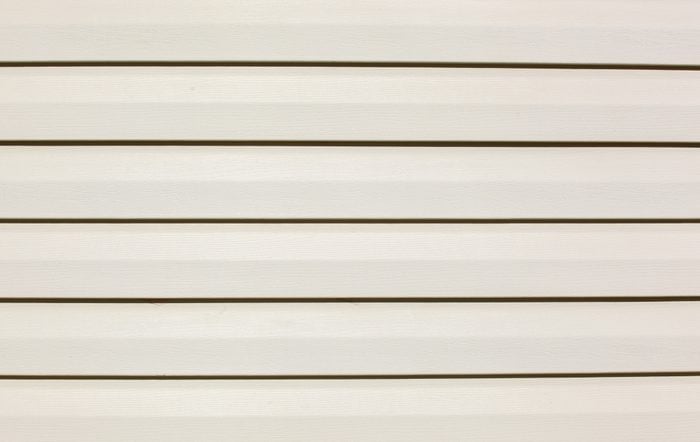
Vinyl
Arriving on the scene in the late 1950s as a replacement for aluminum and wood siding, vinyl siding is made of synthetic PVC resin. Cheap, lightweight and easy to install, the quality has improved over the years, accounting in part for its popularity.
Vinyl siding comes in several variations and styles, from basic clapboard profiles to different thicknesses, textures and colors. Some vinyl siding simulates stone, brick or wood. By itself, vinyl doesn’t have much insulation value, but there is insulated vinyl siding.
Pros
- Affordable: Vinyl is one of the least expensive siding materials to purchase and install.
- Low-maintenance: Vinyl stays clean longer than other materials, and it’s easy to clean when it does get dirty.
- Durable: Vinyl is impact- and fire-resistant.
- Easy to install: Installation can even be a DIY project.
Cons
- Prone to cracking: Excessive exposure to sunlight makes vinyl brittle.
- Not biodegradable: Vinyl siding can be recycled, but it’s slow to degrade.
- Can’t always be repainted: Requires vinyl-safe colors to avoid degrading in the sun.
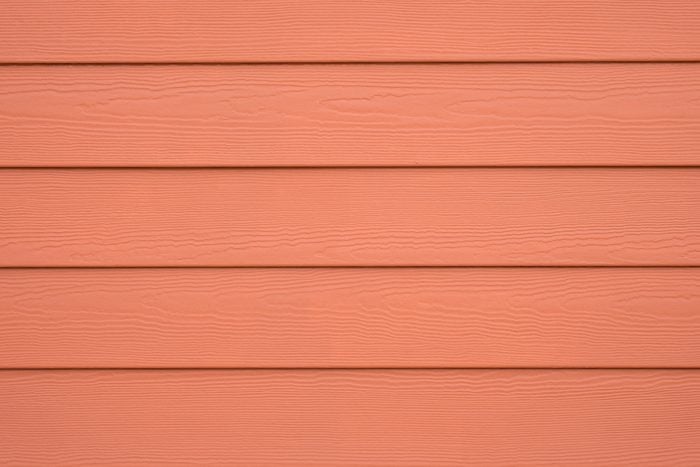
Fiber Cement
Invented late in the 19th century by Austrian Ludwig Hatscheck, fiber cement became commercially viable by the 1980s. Comprised of Portland cement, sand and water reinforced with cellulose fibers from trees, fiber cement can mimic natural wood, brick or stone.
Fiber cement siding is available in panels, slats or shingles from such manufacturers as James Hardie, GAF and others. It’s typically attached to house wrap-covered plywood siding with screws or nails.
Pros
- Fire- and water-resistant: Suitable for extremely wet and dry climates.
- Won’t rot, warp or buckle: It may contain cellulose fibers, but has none of the responsiveness to moisture that wood has.
- Paintable: It often comes pre-primed.
Cons
- Heavy: Besides brick and stone, fiber cement is one of the heaviest siding materials.
- High installation cost: Working with fiber cement is challenging.
- Requires special cutting tools: Fiber cement quickly dulls conventional saw blades.
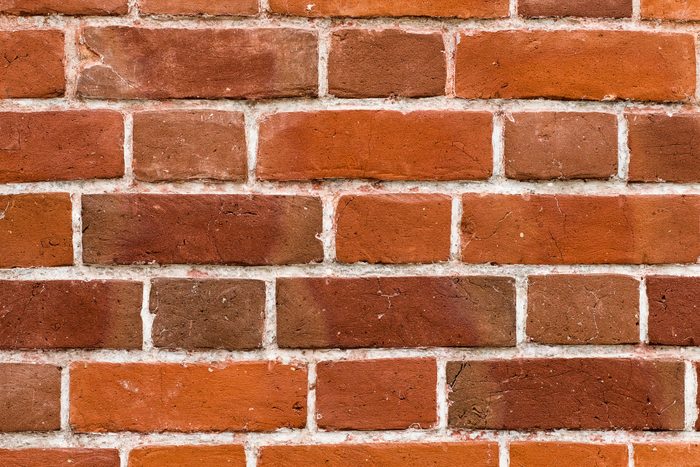
Brick and Brick Veneer
One of the oldest and most beloved exterior building materials, most modern brick is made of clay that’s formed, dried and fired in a kiln at high temperatures. Brick can be textured, coated or glazed.
A brick house isn’t framed in a conventional way because the exterior walls are strong enough to support the structural load of the house. Brick veneers, on the other hand, aren’t load-bearing, so they must be attached to sheathing installed on standard framing.
Pros
- Classic look: The only thing more old-world than a brick house is one made with stone.
- Durable: Brick resists extreme temperatures and harsh weather well and has some insulation value.
- Long-lasting: Brick siding can last for a hundred years or more.
Cons
- Expensive: Brick masons are much sought after and charge hefty fees.
- Labor-intensive installation: Constructing a house brick-by-brick takes time. Brick veneer installation goes much faster.
- Difficult to modify: It’s challenging to make a hole in brick when you need a new vent or window.
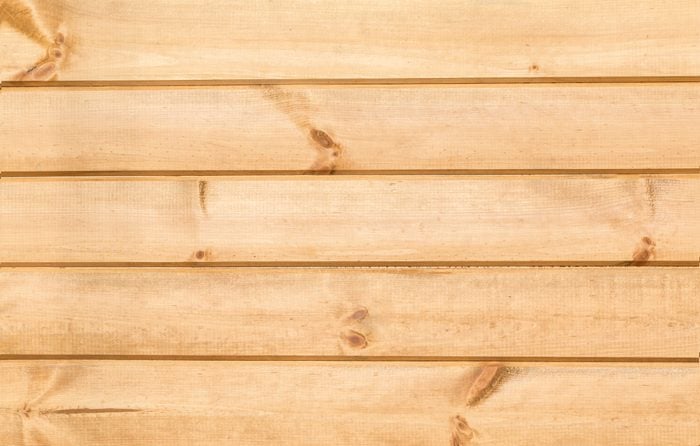
Natural Wood
Wood is one of the most traditional and charming materials for home exteriors. Think San Francisco Victorians, Southern manor homes and Cape Cod-style residences. Here are the most popular types of wood siding.
The most common types are horizontal clapboard or shiplap planks, vertical boards and battens and cedar shingles. Wood can be painted, stained or coated with a clear finish.
Pros
- Naturally beautiful: Many siding materials are manufactured to look like wood, but there’s nothing like the real thing.
- Design flexibility: Whether you paint it, stain it or leave it natural, wood can fit into almost any setting.
- Easy to install: Almost anyone with carpentry skills can install wood siding.
Cons
- Requires regular maintenance: Wood has to be re-coated periodically to protect it from the elements.
- Susceptible to rot and pest infestations: Wood isn’t the ideal material in areas with high humidity, or in termite country.
- Burnable: Though usually treated with a fire retardant, it still burns. Here’s everything you need to know about fire retardant coating.
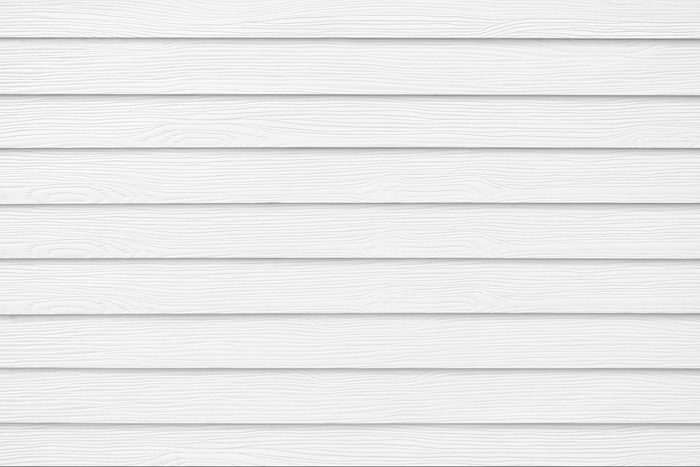
Engineered Wood
Engineered wood siding falls into two broad categories: plywood panels and composite panels or slats. The latter are made from compressed wood chips or strands and resin.
Plywood panels, such as T1-11, usually have a rough sawn face and grooves to mimic vertical boards. The panels are screwed or nailed directly to house-wrap-covered sheathing.
Composite wood typically comes as boards that install horizontally, the same as natural wood boards. Products such as LG’s SmartSide or Collins Truwood come with an extended 30-year warranty.
Pros
- Looks like wood: T1-11 panels actually are wood. Although engineered slats are a type of composite, they look realistic.
- Cost-effective: Engineered wood costs about half that of real wood, and it’s easier to install.
- Eco-friendly: Composite products are typically made from wood waste.
- Many finish options: Engineered wood can come pre-finished or pre-primed so you can paint it whatever color you choose.
Cons
- Moisture susceptibility: Like real wood, engineered wood can swell or shrink with changing humidity conditions.
- Vulnerable to pests and rot: Needs regular maintenance to protect it from infestations.
- Coating may not be permanent: Composite wood siding has a protective wax and borate coating that can wear off.
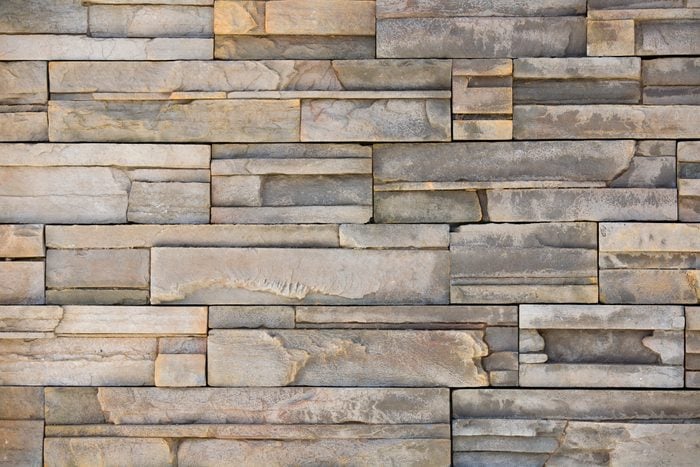
Natural and Synthetic Stone
Natural stone (granite, slate, limestone or travertine) is an impractical option for most homeowners. But synthetic stone veneers are more affordable and offer the same fashionable look.
Synthetic stones may be made from sand, cement and aggregate. They look and feel like the real thing. Stone veneers can also be polyurethane and fashioned into panels for easier installation.
Stone veneers are often installed near the foundation, on the chimney or an accent wall to highlight another siding material. That provides the classic stone look and durability without the expense of a full-on stone installation.
Pros
- The ultimate classic look: If you like rugged and rustic, stone is for you.
- Durability: Real stone and concrete-cast stone veneers provide maximum weather resistance and insulation value.
- Easy installation: Real stone must be installed by a stonemason, but stone veneer panels are ideal for DIY installation.
Cons
- Can be repetitive: Stone veneer panels cast from a mold can have repetitive patterns. It depends on the manufacturer.
- Expensive: Real stone is prohibitively expensive. Even stone veneer tends to be pricier than other exterior siding materials.
- No design flexibility: Choose your stone carefully, because what you see is what you get. You can’t paint or colorize it.
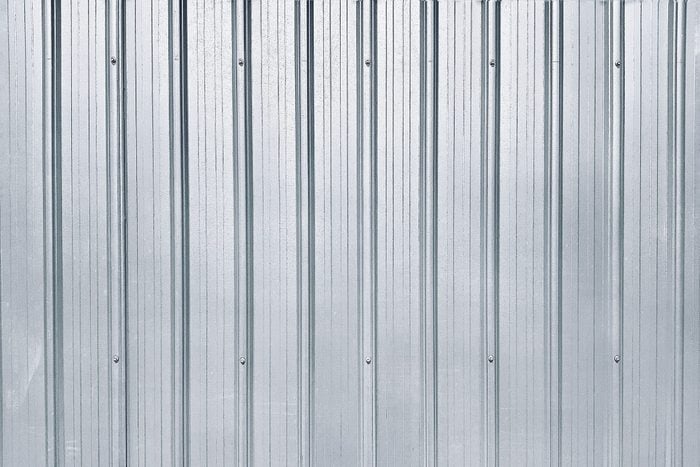
Metal
Although you could conceivably install corrugated galvanized steel siding for an industrial-chic vibe, aluminum is the most common metal siding. Aluminum siding typically comes in horizontal slats installed like vinyl siding, or in panels that give the impression of vertical slats.
Aluminum siding is lightweight and rust-resistant. It doesn’t insulate well on its own, so many manufacturers build in an insulating backing that helps. Metal siding is paintable and requires little maintenance.
Pros
- Cost-effective: Aluminum is one of the least expensive siding materials on the market.
- Resistance to rot, moisture, fire and pests: Aluminum siding stands up to most environmental abuse.
- Eco-friendly: Aluminum siding is recyclable and considered a green building material.
Cons
- Dents easily: Aluminum is a soft metal that’s easy to dent and scratch.
- Noisy: Aluminum siding expands and contracts with changing temperatures, so you’ll occasionally hear popping and pinging.
- Industrial appearance: Aluminum siding is often textured to look like wood, but still has a more industrial aesthetic.




















